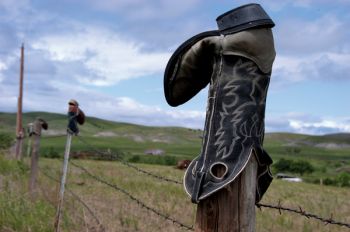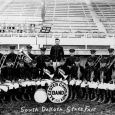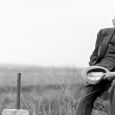The Gift of South Dakota
Subscriptions to South Dakota Magazine make great gifts!
Subscribe today — 1 year (6 issues) is just $29!
Boots, Caps and Taxes
Editor’s Note: This examination of South Dakota culture appeared in the September 1985 issue of South Dakota Magazine, one of the first issues to be published. The state has changed, but many of these observations seem as true today as they did over 30 years ago.
It isn’t like I’ve been a logger or a merchant marine or a soldier of fortune or anything, but I guess I’ve kicked around a little even if I’ve never lived anywhere but the Midwest. I spent my adolescence here in this Land of Infinite Variety, four years in college in Omaha, then a little more than five in the Twin Cities before returning to Sioux Falls late last year.
Along the way, I’ve made stops of varying duration — a few hours, a few days, a week — in New York, Chicago, San Francisco, Las Vegas, Athens, Paris, Washington, and more. It didn’t strike me while I was in any of these places, but it certainly has since we’ve relocated to Sioux Falls. Namely, South Dakota is different from the rest of the world. Here are a few examples:
- In South Dakota, there are no supermarkets. Just “grocery stores.”
- In South Dakota, people do not drive like maniacs. They don’t drive especially well, but this seems to have more to do with a relative lack of other vehicles on the thoroughfares than with pride, vindictiveness or insanity.
- In South Dakota, there are more cowboy boots per capita than in any other Midwestern state. Only a few of them are on the feet of people who look anything like cowboys.
- In South Dakota, a $50,000 house costs $60,000. A $50,000 house costs $75,000 to $90,000 in neighboring states.
- In South Dakota, people do not drink soda. They drink “pop.”
- In South Dakota, an awful lot of towns have the word “city” in their names. And none of them is a city (see below).
- In South Dakota, there are no cities. Just “towns.”
- In South Dakota, the “gimme cap” is king. The mesh-backed adjustable-cap industry would collapse without the active support of nearly every South Dakotan.
- In South Dakota, people seldom say, “Have a nice day.” However, when they do, they usually mean it.
- In South Dakota, automobile mechanics, electricians, contractors, repairmen and the like speak English. They speak some kind of prehistoric patois in other nearby states. Auto mechanics in the Twin Cities don’t speak at all.
- In South Dakota, you can still put out your arm, bend your elbow, yank your fist up and down in the air, and have a passing semi driver give you a blast on his horn. Which is of a lot more interest to kids than it ought to be to you.
- In South Dakota, stop signs are seen as suggestions. Yield signs aren’t seen at all.
- In South Dakota, people say hello to you in shopping centers, in office buildings, or along the sidewalk. I mean, total strangers!
- In South Dakota, the driver of any kind or size of truck will wave at you when you meet on the highway. But only if you’re driving a truck, too.
- In South Dakota, people invariably ask you how it’s going. I have no idea what “it” is, or how it should be going.
- In South Dakota, residents enjoy playing tricks on folks from other states. That’s why Pierre, Hayti, Belle Fourche and Flandreau are pronounced as they are.
- In South Dakota, you’re constantly asked what on earth you’re doing in South Dakota. The correct answer is, “Not paying state income taxes.”
About the Author: William J. Reynolds is the author of The Nebraska Quotient and Moving Targets and does not own a pair of cowboy boots. He lives in Sioux Falls.










Comments